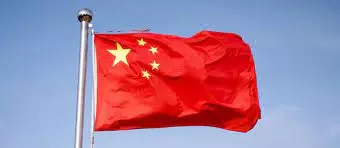
After India, four more countries reject China's 'baseless' new map
India lodged a strong protest with China over its so-called “standard map” laying claim over Arunachal Pradesh and the Aksai Chin

Governments in the Philippines, Malaysia, Vietnam and Taiwan have joined India in rejecting China’s new national map, issuing strongly worded statements accusing Beijing of claiming their territory.
China published a new version of its national map on Monday (August 28) to correct what Beijing has in the past referred to as “problematic maps” that it claims misrepresent its territorial borders. India on Tuesday (August 29) lodged a strong protest with China over its so-called “standard map” laying claim over Arunachal Pradesh and the Aksai Chin, and asserted that such steps only complicate the resolution of the boundary question.
China told to act responsibly
Subsequently, the Philippine government on Thursday slammed China’s 2023 edition of its so-called “standard map” that still shows swaths of Philippine features in the West Philippine Sea. “This latest attempt to legitimise China’s purported sovereignty and jurisdiction over Philippine features and maritime zones has no basis under international law, particularly the 1982 United Nations Convention on the Law of the Sea (UNCLOS),” Foreign Affairs Spokesperson Ma. Teresita Daza said in a statement.
“The Philippines, therefore, calls on China to act responsibly and abide by its obligations under UNCLOS and the final and binding 2016 Arbitral Award,” she added. Manila had already protested the publication of a Chinese national map in 2013, which also placed parts of the Kalayaan Island Group within Beijing’s “national boundaries”.
The Malaysian government said on Thursday that it will send a protest note to China over the latter’s claims on the South China Sea as outlined in the map. The Malaysian Foreign Ministry also said that Malaysia does not recognise China’s claims in the South China Sea, as outlined in the “China Standard Map Edition 2023”, which also encompasses Malaysia’s maritime areas. The map holds no binding authority over Malaysia, it said in a statement.
Vietnam flays provocation
The Vietnamese government also criticised China’s latest provocation. Vietnam strongly reiterates its consistent stance on the sovereignty over Hoang Sa (Paracel) and Truong Sa (Spratly), and resolutely rejects any maritime claims of China that are based on the “nine-dash line” in the East Sea, spokeswoman of the Vietnamese Ministry of Foreign Affairs Pham Thu Hang said on Thursday. Apart from it, the government of Taiwan has also issued strongly-worded statement, accusing Beijing of claiming their territory.
On the other hand, replying to media queries on the map at a regular press briefing in Beijing, Chinese Foreign Ministry spokesman Wang Wenbin said his government hoped the “relevant sides can remain objective and calm and refrain from over-interpreting”.
China claims more than 80% of the South China Sea and backs up its claim with a 1947 map that shows vague dashes - the nine-dash line -- looping down to a point about 1,100 miles (1,800 kilometers) south of Hainan Island. Vietnam, the Philippines, Brunei, Malaysia and Taiwan claim parts of the same maritime area, and have sparred with China over where the boundaries fall.
(With agency inputs)

